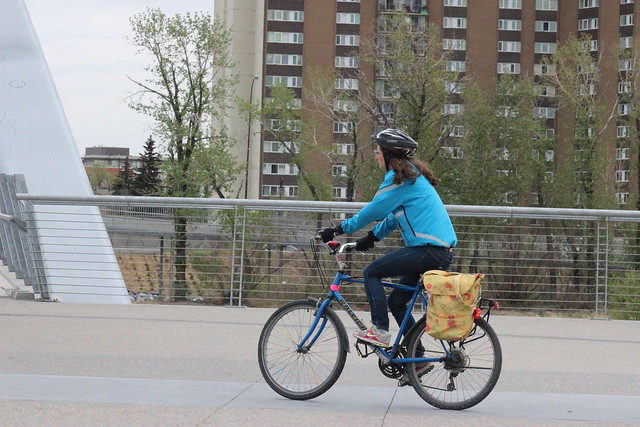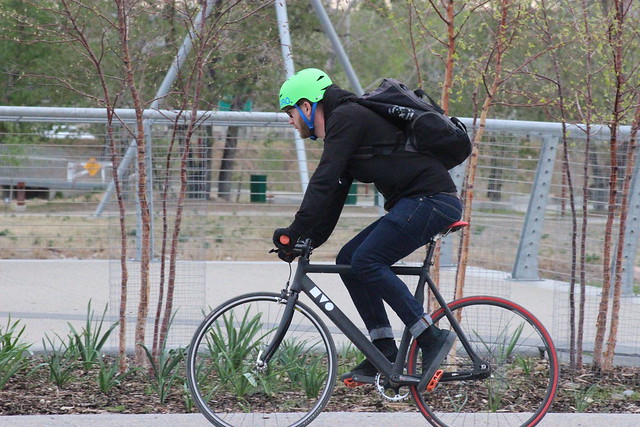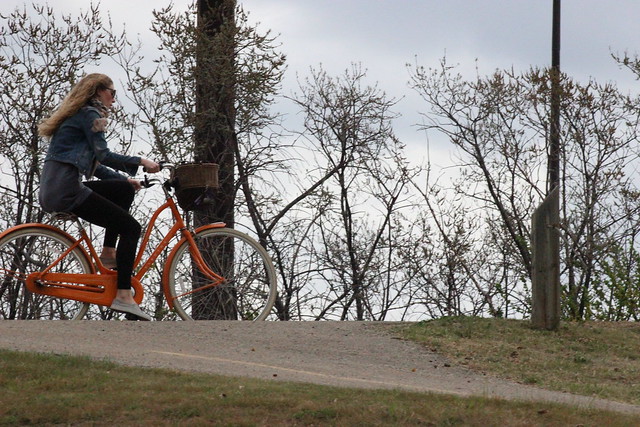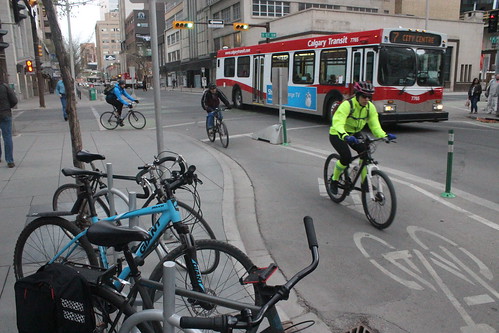There’s something about the simplicity of the bicycle that seems to make everybody want to improve it.
Kickstarter is filled with bike ideas, from bizarre bike lights to bizarre bike carriers to bizarre bike blankets (yes, that’s a thing). There’s nothing inherently wrong with this — most industries would kill for this spirit of innovation. But something about bikes also seems to breed ideas that contravene the old adage of innovation: If it ain’t broke, don’t fix it.
Case in point: This so-cute-that-it-crosses-over-into-ridiculous bike that looks like a car. Called the PodRide by its inventor, a Swedish dude named Mikael Kjellman who has already raised tens of thousands of dollars on Indiegogo, this contraption is basically a recumbent bicycle covered with fabric.

Mikael Kjellman and his PodCar.
Kjellman, by all accounts a clever and well-meaning guy, says he invented the PodRide to help beat the Swedish winters (there’s a heater inside) and to take advantage of “the environmental benefits these vehicles could have if they were made more popular.” The invention has been making the Facebook rounds these days, mostly, I would argue, because the thing is so damn adorable.
But as a practical idea? The world has already figured out how to keep riding year round: By building safe bike infrastructure, maintaining it for the winter, and dressing for the weather (in fact, somebody, ahem, wrote a book about winter cycling). It’s not rocket science
In fact, I’d argue the PodCar may actually set back the cause Kjellman is purporting to further. Not only does this thing perpetuate the notion that riding in winter is something abnormal that requires special gear, it also creates the impression that bicycles would be a more practical transportation option if they were just a little bit more like cars.
In the big scheme of things, I hardly think the PodCar is a major threat. But there are other ideas out there that perpetuate the idea that cycling is in need of some kind of tech or design fix that really could set back the cause of urban cycling around the world.
Cycling seems to lend itself to giant hare-brained architectural ideas (particularly in London), like the SkyCycle, the floating bike lane dubbed the Thames Deckway, and the bike routes running through abandoned subway tunnels. All of which sure look futuristic in the renderings, but seem to sidestep the reality that cycling isn’t just about transportation — putting bikes on a street makes cities better for everybody because it brings a more human scale to the streets.
Even smaller projects, like this lusted-over airbag helmet or these concept bicycle designs that seem to draw eyeballs at all the bike bike-industry trade shows may seem well and good, but they aren’t exactly furthering the cause of getting more people in cities on bikes.
https://www.youtube.com/watch?v=CMAhptqk-4Q
And despite my soft spot for Elon Musk, and his heartening talk about the urban transportation problem, his recent hint that he’s working on some kind of autonomous bus seems to be a solution for a problem that has already been fixed. If it is, as the speculation goes, some of kind of vehicle to transport people to and from transit stops, also known as the first mile/last mile problem, well, such a vehicle has already been invented. It’s called a bicycle.
Here’s the thing: We already know what works. Bikes haven’t changed much in 100 years because they work. Separated and safe bike lanes work. Want an innovation that will really disrupt the bicycle industry? Invent something to break through civic politics and bureaucracy preventing more bike lanes from being built.
I’m not saying we shouldn’t innovate. E-bikes, cargo bikes and carbon builds have all shown massive improvements in recent years. But let’s not get distracted on frivolities.
Or at least put your innovative brain power into stuff like this or this. At least the ride will be enjoyable.













